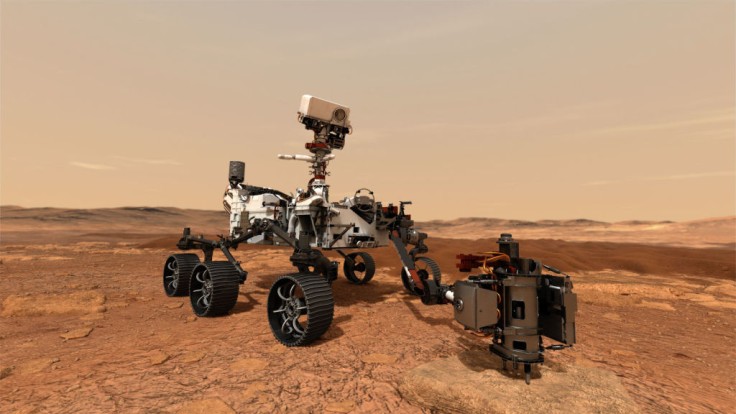
The built-in two microphones in a NASA's Perseverance rover give a new dimension to how scientists and engineers study Mars exploration.
The mission has recorded nearly five hours of Martian wind gusts, rover wheels crunching over gravel, and motors buzzing as the spacecraft moves its arm, thanks to two microphones aboard the Perseverance rover.
Scientists and engineers may now experience the Red Planet in new ways thanks to NASA's little guy on the Red Planet.
NASA Perseverance
The Perseverance rover is the first spacecraft to use dedicated microphones to record the sound of Mars, both of which were commercially accessible off-the-shelf products.
One sits on the chassis of the rover's side. The second microphone is mounted on Perseverance's mast as a supplement to the SuperCam laser instrument's rock and atmospheric investigations.
The SuperCam instrument and microphone were provided by the Los Alamos National Laboratory (LANL) in New Mexico and a consortium of French research laboratories under the auspices of the Centre National d'Etudes Spatiales, while the body mic was provided by NASA's Jet Propulsion Laboratory in Southern California (CNES).
The Sounds From Mars
According to The Next Web, Perseverance's SuperCam uses a laser to zap rocks and soil, then uses the camera to analyze the resultant vapor.
The laser has the ability to pulse hundreds of times per target, and there are a lot of opportunities to record the sound of those zaps. In fact, the microphone has already recorded over 25,000 laser shots.
Scientists are also learning about changes in the planet's atmosphere courtesy of some of these recordings.
Besides, sound passes across the air via vibrations.
The SuperCam mic is ideally positioned on Perseverance's mast for measuring microturbulence minute fluctuations in the air, and it compliments the rover's specific wind sensors, which are part of a package of atmospheric tools dubbed MEDA, which stands for Mars Environmental Dynamics Analyzer.
MEDA's sensors take one to two samples of wind speed, pressure, and temperature every second for up to two hours. Furthermore, the microphone on the SuperCam can deliver equivalent data at a rate of 20,000 times per second over several minutes.
The microphone can also be used to study how sound travels on Mars.
Scientists suspected higher-pitched sounds would be difficult to hear because the planet's atmosphere is much less dense than Earth's.
Nevertheless, sound travels so much further on Mars than we believed, according to Nina Lanza, a SuperCam scientist at LANL who works with the microphone data. It demonstrates the significance of field research.
The sound of Mars could also be heard here on NASA's website.
Mars Exploration By NASA
For the space agency, astrobiology, especially the search for traces of ancient microbial life, is a significant goal for Perseverance's mission on space.
As reported by NASA, the Mars exploration rover will study the planet's geology and climate history, lay the route for future human exploration of Mars, and be the first mission to gather and cache Martian rock and regolith.
Following the agency's missions, in collaboration with the European Space Agency (ESA), the spacecraft had been sent Mars to collect these sealed samples from the surface and return them to Earth for further investigation.
The sound of Mars 2020 Perseverance rover mission is part of NASA's Moon to Mars exploration strategy, which incorporates Artemis lunar missions to help prepare the future generation for human exploration of Mars.
The Perseverance rover was created and is operated by JPL, which is managed for NASA by Caltech in Pasadena, California.









